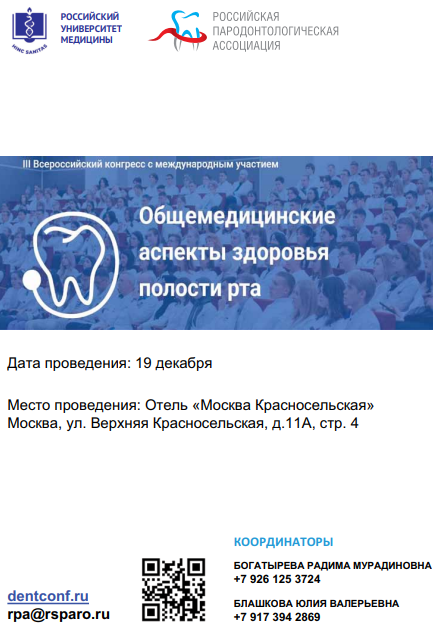Comprehensive rehabilitation of a patient with juvenile ossifying fibroma of the mandible: a clinical case
https://doi.org/10.33925/1683-3031-2025-972
Abstract
Relevance. Ossifying fibroma is a benign fibro-osseous neoplasm most frequently diagnosed in young patients. Conventional surgical techniques such as curettage are associated with a high recurrence rate; therefore, segmental resection of the affected area with a safety margin beyond the tumor border is generally recommended. This approach, however, creates a mandibular continuity defect of variable extent, leading to loss of multiple teeth, facial asymmetry, and malocclusion. Restoring mandibular integrity and the dental arch is therefore a central treatment goal. Objective. To present a comprehensive rehabilitation protocol for a patient with juvenile ossifying fibroma (JOF) of the mandible.
Case presentation. A 10-year-old girl presented with a progressive, painless enlargement of the left mandible. Cone-beam computed tomography (CBCT) and biopsy established the diagnosis of juvenile ossifying fibroma, trabecular variant, involving the left mandibular body with an approximate length of 6 cm. The lesion was treated by en bloc (segmental) resection with immediate reconstruction using a free vascularized iliac crest bone graft with microvascular anastomosis. Postoperatively, the patient exhibited distal occlusion (Class II malocclusion), loss of the mandibular segment in the region of teeth 33–38, and reduced interalveolar height on the left. Using a digital workflow, a surgical guide fabricated from domestically produced polymer materials was used for subsequent dental implant placement. Subsequently, orthodontic treatment was performed to restore interalveolar height at the mandibular defect, followed by placement of a temporary implant-supported prosthesis.
Conclusion. A multidisciplinary approach to the rehabilitation of growing patients with JOF—including tumor removal by segmental mandibular resection with immediate reconstruction using an autogenous bone graft, placement of dental implants within the grafted area, and orthodontic management—has proven highly effective in restoring the anatomy and function of the dentoalveolar system in young patients.
About the Authors
O. T. ZangievaRussian Federation
Zangieva T. Olga, DDS, PhD, DSc, Associate Professor, Department of the Maxillofacial surgery, Institute of Advanced Medical Training
70 Nizhnyaya Pervomayskaya Str., Moscow, Russian Federation, 105203
R. N. Fedotov
Russian Federation
Roman N. Fedotov, DDS, PhD, Associate Professor, Department of the Pediatric Maxillofacial Surgery
Moscow
A. Y. Androsov
Russian Federation
Alexey Yu. Androsov, DMD, PhD Student, Department of the Prosthodontics, Medical Institute
Moscow
A. A. Filatenko
Russian Federation
Anna A. Filatenko, DMD, Head of the Department of Orthodontics
Krasnogorsk
S. A. Epifanov
Russian Federation
Sergei A. Epifanov, DDS, PhD, DSc, Professor, Head of the Department of Maxillofacial surgery, Institute of Advanced Medical Training
Moscow
O. Z. Topolnitsky
Russian Federation
Orest Z. Topolnitskiy, DD, PhD, DSc, Professor, Head of the Department of the Pediatric Maxillofacial Surgery
Moscow
References
1. Slootweg PJ. Juvenile trabecular ossifying fibroma: an update. Virchows Arch. 2012;461:699–703. https://doi.org/10.1007/s00428-012-1329-5
2. El-Naggar AK, Chan JKC, Takata T, Grandis JR, Slootweg PJ. The fourth edition of the head and neck World Health Organization blue book: editors' perspectives. Hum Pathol. 2017;66:10-12. https://doi.org/10.1016/j.humpath.2017.05.014
3. Chrcanovic BR, Gomez RS. Juvenile ossifying fibroma of the jaws and paranasal sinuses: a systematic review of the cases reported in the literature. Int J Oral Maxillofac Surg. 2020;49(1):28-37. https://doi.org/10.1016/j.ijom.2019.06.029
4. Grachev N. S., Gorozhanina A. I., Petrovsky Yu. V., Zyabkin I. V., Yunusov A. S., Vorozhtsov I. N., Babaskina N. V. Clinical case of removal of juvenile ossifying fibroma of the upper jaw in a child by intraoral access with reconstruction of the defect with a revascularized fibular autograft. Head and neck. Russian Journal. 2022;10(1):57–63 (In Russ.). https://doi.org/10.25792/HN.2022.10.1.57-63
5. Androsov A. Yu., Voronov I. A., Apresyan S. A., Stepanov A. G., Zangieva O. T., Kuprikov O. S. Properties of modern domestic materials used for additive manufacturing of navigation templates. Actual problems in dentistry. 2025;21(2):5-10 (In Russ.). https://doi.org/10.18481/2077-7566-2025-21-2-5-10
6. Johnson LC, Yousefi M, Vinh TN, Heffner DK, Hyams VJ, Hartman KS. Juvenile active ossifying fibroma. Its nature, dynamics and origin. Acta Otolaryngol Suppl. 1991;488:1–40. Available from: https://pubmed.ncbi.nlm.nih.gov/1843064/
7. Slootweg PJ, Panders AK, Koopmans R, Nikkels PG. Juvenile ossifying fibroma. An analysis of 33 cases with emphasis on histopathological aspects. J Oral Pathol Med. 1994;.23:385–388. https://doi.org/10.1111/j.1600-0714.1994.tb00081.x
8. Taylor GI, Miller GD, Ham FJ. The free vascularized bone graft. A clinical extension of microvascular techniques. Plast. Reconstr. Surg. 1975;55(5):533–44. https://doi.org/10.1097/00006534-197505000-00002
9. Kokosis G, Schmitz R, Powers DB, Erdmann D. Mandibular Reconstruction Using the Free Vascularized Fibula Graft: An Overview of Different Modifications. Arch Plast Surg. 2016;43(1):3-9. https://doi.org/10.5999/aps.2016.43.1.3.
10. Gosain AK, Song L, Santoro TD, Amarante MT, Simmons DJ. Long-term remodeling of vascularized and nonvascularized onlay bone grafts: a macroscopic and microscopic analysis. Plast. Reconstr. Surg. 1999;103(5):1443–1150. https://doi.org/10.1097/00006534-199904050-00013
Review
For citations:
Zangieva O.T., Fedotov R.N., Androsov A.Y., Filatenko A.A., Epifanov S.A., Topolnitsky O.Z. Comprehensive rehabilitation of a patient with juvenile ossifying fibroma of the mandible: a clinical case. Pediatric dentistry and dental prophylaxis. 2025;25(2). (In Russ.) https://doi.org/10.33925/1683-3031-2025-972





































